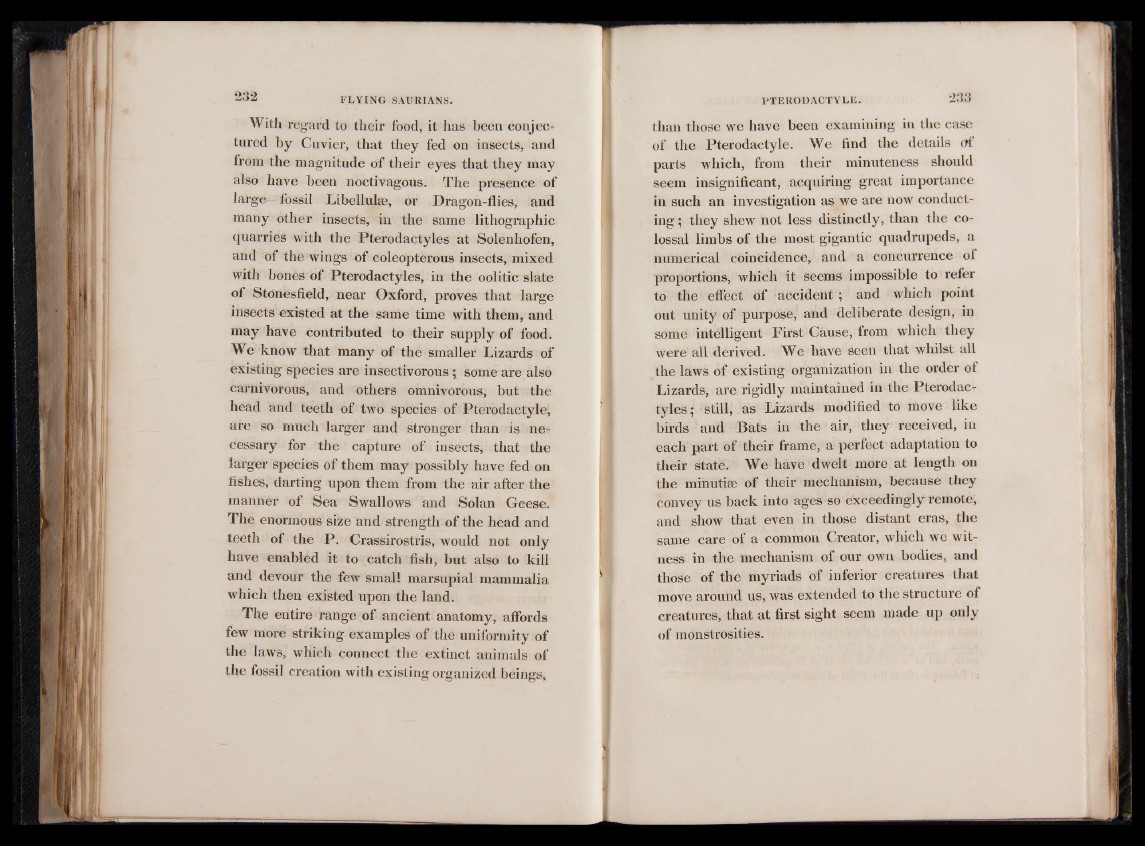
With regard to their food, it has been conjectured
by Cuvier, that they fed on insects, and
from the magnitude of their eyes that they may
also have been noctivagous. The presence of
large fossil Libellulse, or Dragon-flies, and
many other insects, in the same lithographic
quarries with the Pterodactyles at Solenhofen,
and of the wings of coleopterous insects, mixed
with bones of Pterodactyles, in the oolitic slate
of Stonesfield, near Oxford, proves that large
insects existed at the same time with them, and
may have contributed to their supply of food.
We know that many of the smaller Lizards of
existing species are insectivorous; some are also
carnivorous, and others omnivorous, but the
head and teeth of two species of Pterodactyle,
are so much larger and stronger than is necessary
for the capture of insects, that the
larger species of them may possibly have fed on
fishes, darting upon them from the air after the
manner of Sea Swallows and Solan Geese.
The enormous size and strength of the head and
teeth of the P. Crassirostris, would not only
have enabled it to catch fish, but also to kill
and devour the few small marsupial mammalia
which then existed upon the land.
The entire range of ancient anatomy, affords
few more striking examples of the uniformity of
the laws, which connect the extinct animals of
the fossil creation with existing organized beings*
than those we have been examining in the case
of the Pterodactyle. We find the details ctf
parts which, from their minuteness should
seem insignificant, acquiring great importance
in such an investigation as we are now conducting
; they shew not less distinctly, than the colossal
limbs of the most gigantic quadrupeds, a
numerical coincidence, and a concurrence of
proportions, which it seems impossible to refer
to the effect of accident; and which point
out unity of purpose, and deliberate design, in
some intélligent First Cause, from which they
were all derived. We have seen that whilst all
the laws of existing organization in the order of
Lizards, are rigidly maintained in the Pterodactyles;
still, as Lizards modified to move like
birds and Bats in the air, they received, in
each part of their frame, a perfect adaptation to
their state. We have dwelt more at length on
the minutiae of their mechanism, because they
convey us back into ages so exceedingly remote,
and show that even in those distant eras, the
same care of a common Creator, which we witness
in the mechanism of our own bodies, and
those of the myriads of inferior creatures that
move around us, was extended to the structure of
creatures, that at first sight seem made up only
of monstrosities.